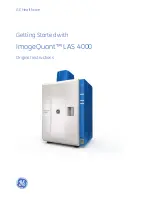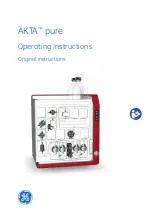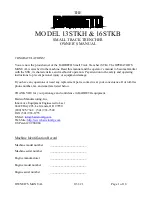
DL9110 / DL9118
Operating Instructions
- 23 -
display and the calculated Prospective Fault Current (PFC) or
Prospective Short-circuit Current (PSC) is shown in the secondary
display.
Note: The DL9110 / DL9118 will determine the fault voltage that
may appear on the protective conductor during the test. If
the fault voltage is greater than 25V the DL9110 / DL9118 will
indicate >25V on the LCD, but the user may proceed with the
test. If the fault voltage is greater than 50V, this is indicated
on the LCD and the test is inhibited.
Note: A Line Impedance measurement is automatically made as
part of the Earth Loop Impedance test. The Line Impedance
measurement (L-N) and Prospective Short-circuit Current
(PSC) can be viewed by simply pressing function key F1,
without the need to repeat the test.
5.10 Auto RCD Test Sequence
The DL9110 / DL9118 will only allow the RCD test to be
performed if the correct voltages are detected between
line-earth (L-PE illuminated), line-neutral (L-N illuminated)
and neutral-earth (N-PE
not
illuminated).
Potential fields from other earthing installations, large
voltages between the protective conductor and earth,
large voltage between the neutral and earth or leakage
currents in the circuit following the residual current
protection device may influence the measurement.
Equipment which is connected downstream of a residual
current protective device (RCD) may cause a considerable
extension of the operating time.
The Auto RCD test is used to automatically perform a sequence of 6
RCD trip time tests with a single press of the TEST key. Each time the
RCD trips, the sequence will automatically continue once the RCD is
reset. The sequence comprises of test at:
½I
∆
n / 0
°
½I
∆
n / 180
°
Ι∆
n / 0
°
Ι∆
n / 180
°
5I
∆
n / 0
°
5I
∆
n / 180
°















































